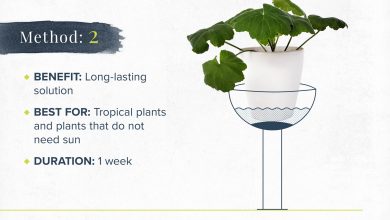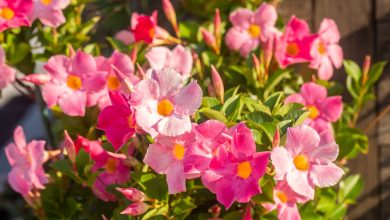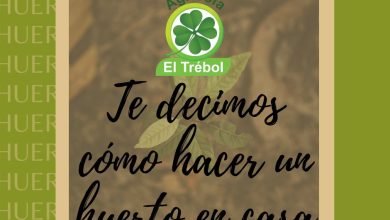Characteristics and examples of seedless plants

The seedless plant are perhaps one of the most archaic forms of life on our planet. But despite the fact that it existed at the beginning of life, there are several species that have already become extinct, although many others remain. Some are so common that they are present in our garden and undoubtedly a great variety comes from the hand.

Do not stop reading: A couple of recommendations for the division of perennials
Characteristics of seedless plants
Unlike gymnosperms and angiosperms, seedless plants do not produce any type of seed (hence their name), flowers, or fruits. Seedless plants are characterized by their wide propagation thanks to their reproduction system and by having a waterproof cuticle that makes them resistant to drastic changes in climate. And although seedless plants require humid environments to thrive, they are resistant to droughts and areas with insolation. Thanks to these characteristics, they are usually the first vegetation to colonize arid areas, or where the vegetation has been eradicated.
Reproduction of seedless plants
This type of plant is propagated in two ways. One is by sexual reproduction of spores and the other is by asexual reproduction by fragmentation. Plants that reproduce by spores, store spores in the cavities or low sacs of the leaves called sporangia that remain there until they are fertilized, at which time they are released by external agents such as water and air until they reach new destinations. This reproduction has great advantages, which is that it consumes little energy and the spores are not susceptible to animal predation, since they hardly have any nutrients. The downside is that the spores are easily attacked by fungi and bacteria.
Reproduction by fragmentation occurs when the plant is in contact with water and a fragment or portion of itself becomes detached and is taken to a new area where it can fixate and grow.
Examples of non-vascular seedless plants
Bryophyte species are non-vascular seedless plants that are divided into hornworts, liverworts, and mosses. They are small in size and sometimes reach a height of 20 cm. They have their own stems, leaves and roots, they grow in humid places. Among the non-vascular seedless plants are:
Hepatic
- Mannia rupestris: of the genus Mannia that includes about 13 species.
- Ricciocarpus natans: it is of the aquatic type and can be found in North and South America, as well as Japan, Europe and South Australia.
- Conocephalum conicum: It is also known as Snakeskin Hepatic or Mushroom Head Hepatic.
Anthoceros
- Leiosporoceros dussii: it is the only species of its genus and male specimens have not yet been found.
- Anthoceros agretis: known as horn of the field or flower horn.
Mosses
- Grimmina pulvinata: This moss produces grayish and green formations. It usually lives on limestone rocks, roofs and walls.
- Sphagnum: This moss is known as peat moss. It is capable of retaining large amounts of water, which is why it is used in gardening to generate a water balance.
- Polytrichum: called moss hair, this name is due to the hairs that cover it, giving it a dense carpet appearance.

Examples of vascular seedless plants
Seedless vascular plants or pteridophyte plants have a vascular tissue that is responsible for transporting water and nutrients through the interior of the plant. Thanks to this tissue, vascular plants can develop in large sizes. And although most seedless plants are extinct, you can find a few:
Psilotum
They form green stems that branch out. They have leaves with yellow sporangia, similar in appearance to a broom brush. The species are the Psilotum complanatum and the Psilotum nudum .
Ferns
The most common plants and are noted for their large fronds and their characteristic violin heads. They are typical of tropical forests.
Lycophytes
They are very similar to mosses, but have vascular tissue. The resurrection plant is one of the most common. It is resistant, since it can dry out and recover when receiving water after years.
Horsetails
Of hollow stems like reeds. They are easy to find in swampy areas. Among its varieties is Equisetum arvense nemorosum and Equisetum serotinum .
Uses of seedless plants
Today, seedling plants have not displaced those that have no seed. However, many of them have different uses.
Crafts
In certain countries of Central America they use the branches of certain species to weave and create sandals, baskets, hats and bags.
Ornaments
In European regions, many species of this type are found in houses and museums as decoration, due to its great adaptation it is a natural adornment of little care.
Foods
Some plants such as ferns are used as a food source in the tropical regions of Africa.
Seasonings
Certain species are used to flavor some type of exotic food.
Medicine
Many species are used as medicinal plants, when preparing infusions, or topically on lesions.
Fertilizer
In Asia, this plant is used to fertilize soils where wheat, soy or rice crops are grown. This is due to the nutrients that can be absorbed and transported.
What do you think of the information on seedless plants ? sure you learned something else today right?



![Photo of Ambulia: [Care, Characteristics, Cultivation, Substrate and Pests]](https://www.complete-gardening.com/wp-content/uploads/2022/08/ambulia-care-characteristics-cultivation-substrate-and-pests-390x220.jpg)
